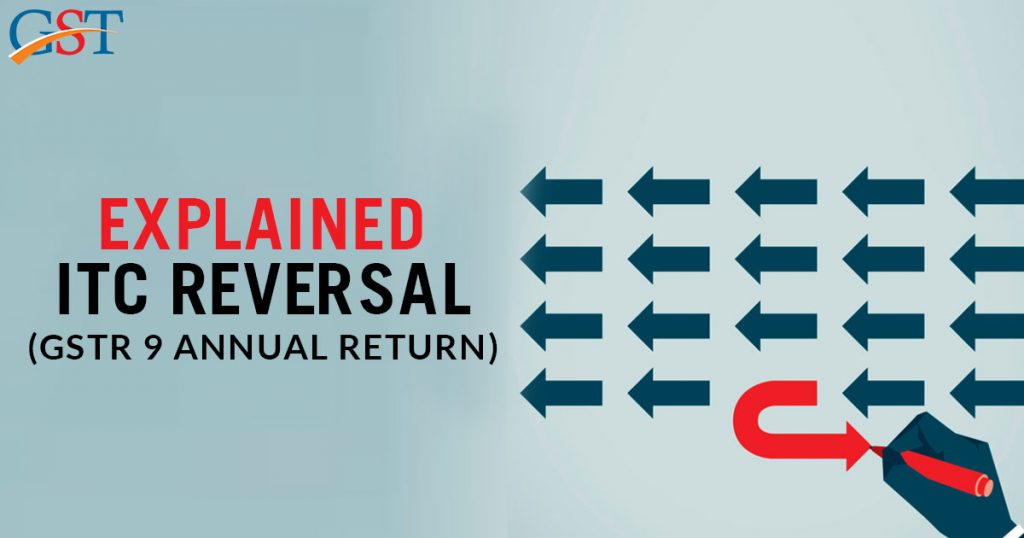
In India, Reversal of the ITC is a common term under the Indirect Tax Regime. Not only India, but other countries as well are aware of this term. Like when we talk about Malaysia Reversal of the ITC is there too. In India, we also have an ITC reversal process to avoid cases like deprivation of the cash flows, loss of revenue etc.
The reclaim and reversal process is carried on by the taxpayers and are verified by the Government considering the financial statements furnished by the taxpayer at regular intervals. They are verifiable even at the time of GST Audit and in case of any mismatch, the same can be reversed.
Excluding the general ITC rule and squad of ineligible ITC, the claimed ITC of input supplies requires to be reversed on the subsequent happening of the below-given events:
- Recipient of the supply fails to pay to the supplier within the period of 180 days of the issue of the invoice.
- Credit note issued to ISD
- Recipient of supply utilises input goods/services for any purpose (but not for business) or for providing exempted supplies [such as Personal use]
- Recipient of supply utilises capital goods for any purpose (but not for business) or for providing exempted supplies
- A person gets his regular GST registration changed into Composite Scheme [u/s 18(4)] or aborts GST registration [u/s 29(5)]
- A person sells Plant and machinery or other Capital goods [u/s 18(6)]
- ITC for inputs placed as stock in trade
Some of the Cases are Discussed Below:
Rule 37(2) – 180 days Non Payment
This rule implies that when a dealer who has availed ITC on inward supplies, could not pay the invoice amount to the supplier within the time period of 180 days then it led to the reversal of ITC.
Similarly, if a portion of the invoice is paid then the ITC will be reversed on a proportionate basis.
The business has to maintain the creditors ageing and other information because on that basis only they can reverse the Input Tax Credit. For big organizations which execute many transactions from multiple locations, it becomes a daunting and complicated task. But with the invention of new technology on a regular basis, this process becomes very simple with accounting software or ERP.
Section 16 of the CGST Act defines the provisions for the reversal of the ITC.
Further stated that when a recipient could not pay to the supplier of goods or services or both, except for the supplies on which tax is payable on the basis of reverse charge, the amount towards the value of supply along with tax payable thereon within a time period of 180 days, starting from the date of issue of invoice by the supplier, an amount equal to the ITC taken by the recipient shall be combined with his output tax liability, in addition to the interest thereon, in such a way as may be stated:
When all the supplier invoices, issued from 1st July 2022 to 3rd July 2022, are unpaid, ITC is reversible along with interest.
In addition, the amount of ITC to be reversed should be classified into IGST, CGST, SGST and Cess.
For Instance –
Mr Z received goods/services worth Rs. 10000 on 1st July 2022 on which GST of Rs. 1800 was levied. Mr Z claimed the GST of Rs 1800 as ITC in his GSTR 3B but failed to pay the invoice amount till December 2022 i.e. within 180 days. Then Mr A will be under obligation to reverse the ITC of Rs 1800 while filing GSTR 3B for December 2022 in January 2023.
Rule 39(1) – Credit note issued to ISD
When a supplier gives a Credit Note to an ISD, the hitherto allocated ITC has to be reversed. The dealer, to whom the credit was delivered, also comes under an obligation to reverse this ITC. This reversal of input tax credit shall be in the alike proportion as in the initial ITC allocation by the ISD.
In addition, the amount of ITC to be reversed should be classified into IGST, CGST, SGST and Cess.
For Example –
Mr X avails services of Rs 100000 on which he paid GST of Rs 18000 and he distributed this credit among 2 dealers A and B in the 1:2 ratio. A and B claimed the ITC via GSTR 3B after which Mr X received a credit note of Rs 23600 (encompassing GST of Rs 3600). Now the GST of Rs 3600 has to be reversed by A & B in the same ratio of 1:2. So A and B will reverse ITC of Rs 1200 (3600 * 1 / 3) and Rs 2400 (3600 * 2 / 3) respectively. The same will be mentioned in the reversal of the ITC section in the GSTR-3B by both A and B.
Rule 42(1) – ITC on Input Supplies Partially Used for Business and Partially for Personal Use or Exempt Supplies
GSTR 3B allows the reversal of the ITC used for exempt supplies and personal use.
Calculation of ITC reversal on Exempt Supplies –
Step 1 – Compute the Common Credit in the following way:
Total ITC on Input Supplies
- (minus) ITC on supplies used for exclusively Personal Purposes
- (minus) ITC on supplies used for providing exclusively exempt supplies
- (minus) ITC on which credit is not available
- (minus) ITC on supplies other than exempted but including zero-rated supplies (ITC on normal supplies)
In short, Common Credit is ITC on inputs partially used for exempt supplies or personal use.
Step 2 – Amount of reversal of input tax credit applicable to inputs partially used for Exempt supplies
= (Value of Exempt Supplies * Common Credit) / Total Turnover in the State
Calculate ITC on Personal Use – 5 % of Common Credit
Both these ITC amounts as calculated have to be reversed in the GSTR 3B filed by the dealer.
Rule 43(1) – ITC on Capital Goods partially used for business and partially for exempt supplies or personal use
ITC on capital goods used for the supply of exempt supplies and non-business purposes will also be reversed
The calculation will be similar to the calculation for ITC on inputs used for exempt supplies and personal use.
Step 1 – Calculate Common Credit –
Common Credit = ITC on Capital Goods
- (less) ITC on capital goods put to exclusively personal use
- (less) ITC on capital goods used for exclusively exempted goods
- (less) ITC on capital goods used in supplies other than exempted but including zero-rated supplies (ITC on normal supplies)
Step 2 – The value of ITC reversal in reference to capital goods partially utilised for Personal use and Exempt supplies is the Value of Exempt Supplies multiplied with Common Credit followed by its division by the total Turnover in the State
Read Also: Easy Guide to Capital Goods Under GST with Input Tax Credit Eligibility
Step 3 – This kind of reversal of ITC is done on a monthly basis wherein the life duration of any asset is taken as 5 years. Therefore the amount of ITC reversal for every month will be calculated as the Amount obtained in Step 2 divided by 60 (months).
Others ITC Reversals
- Reversing ITC for inputs placed as stock in trade: The amount of input tax credit reversal for inputs in stock shall be calculated in proportion to the corresponding invoices on which credit had been met.
- Reversing ITC when Invoices are not available: In case when the above-mentioned tax invoices are unavailable, the credit reversal amount shall be calculated on the basis of the market price of the goods prevailing on the date of a relevant event.
- Reversing ITC for Capital goods: For capital goods, the ITC for the remaining residual life of capital goods in months shall be calculated on a pro-rata basis, considering the residual life as five years.
For example – When the Capital goods have been in utilised for 4 years, 6 month and 15 days.
The remaining life of capital goods = 5 years – 4 years 6 months & 15 days i.e. = 5 months (60 – 55 months) not considering the part of the month when ITC has taken on such capital goods = 12000
Here, Input tax credit in relation to remaining leftover life is 12000 X 5/60 = 1000.










Hi,
I have one issue in Common credit Reversal
For Example :
I have Exempted Turnover in GSTR9 of Rs. 10,00,000/- (Other Interest Income Rs.50,000/- & Exempted Sales Rs.9,50,000/-). So, my question is whether interest income is applicable to common credit reversals or only exempted sales.
Only Exempted sales
04.07.2020
Sir.,
INPUT REVERSAL ON EXEMPTED GOODS (ie., MAGAZINE sales to subscribers) IS AN ASSET OR EXPENSE. PLEASE CLARIFY.
THANKS, AND REGARDS
K.RENGARAJAN
AN ACCOUNTANT OF PRIVATE COMPANY
INPUT REVERSAL ON EXEMPTED GOODS, is a liability
Very useful and nice … Thanks, Madam
Under what circumstances, the ITC reversed can be re-availed, could have been also mentioned….